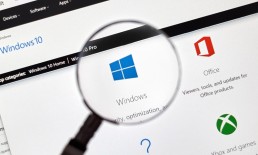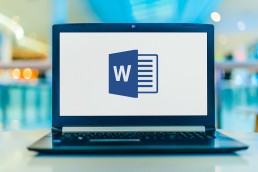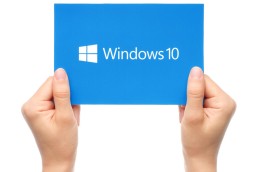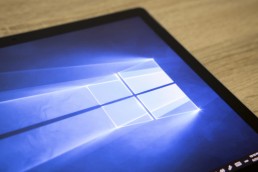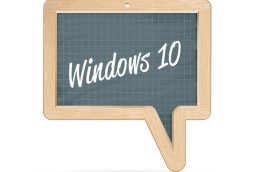The differences between Windows Server and Windows OS
The differences between Windows Server and Windows OS
The basis: similar code
What are the advantages of Windows Server? Windows OS and the Windows Server have numerous differences. Nevertheless, they have a common basis: the source code. This serves as a kind of agreement through which it is possible to switch back and forth between the Windows OS and the Windows Server. Since both have the same task view, desktop and start buttons, it can sometimes be difficult to tell them apart. The similar code also helps to make it possible to use the same kernel on both, i.e. the central part of the operating system, as well as the same software. However, for access to the Windows Server, so-called Windows Server CALs are required. Only if they are available in sufficient numbers can a network connection be established. For users, the advantages of Windows Server are not least that preferred applications such as Microsoft Office or Google Chrome can be used on both.
The advantages of Windows Server
The advantages of a Windows Server are obvious to many companies, which is why they regularly opt for a new version of the product. Although it is not necessary to always run the latest edition, it should be considered as soon as major changes are imminent that will take the company forward. The latest version of Windows Server stands for more security and a fundamental modernisation of the infrastructure, which is why the investment pays off in most cases:
- The new platform supports a hybrid IT environment and is equally flexible, scalable and ready for the cloud.
- Companies can choose a so-called Azure Edition so that they receive a direct connection to the Microsoft Azure data centre. This means that investments already made can continue to be used.
- A better network connection, additional virtual machines and a revamped admin interface increase the efficiency of administration and make the data centre’s work easier.
- The combination of a local infrastructure and the cloud resources used is favoured by optimised server management.
- The modern server version also shows that the advantages of Windows Server focus strongly on containerised applications. This increases performance while simplifying development and deployment.
- Remote access for external employees, employees in the home office or remote workers is noticeably simplified. Since data and applications are available at any time and from any location, comfortable and productive work is possible.
- Another advantage of Windows Server is the increased and multi-layered security functions. They simplify protection against cyber attacks and protect sensitive company data as well as the apps.

Management software specifically for businesses
The Windows server is mainly used in companies, where it is used to run numerous services over a specific network. For simple offices or schools, on the other hand, a normal Windows OS is sufficient for day-to-day tasks in most cases. For this reason, the management software is specially tailored to the needs of companies and gives them comprehensive administrative control: from applications to data storage to the company network.
Fewer hardware restrictions
The new server from Microsoft makes it easier to connect additional hardware components to the existing system. In most cases, the appropriate software is offered directly for new end devices such as a printer. The same applies to other parts of the hardware, for example an extension of the existing memory.
Only relevant functions
Since Windows Server 2022 is aimed at different companies, it contains a wide range of functions. This includes all central aspects that are important in the daily workflow. Of course, not all functions have to be used: Instead, the company has a set of tools at hand with which the individual departments can be supported.
Conclusion
Companies benefit from the numerous advantages that the new Windows Server offers them. While most functions have been fundamentally improved, there are also new approaches in the latest edition. These include, among other things, the focus on security. This makes the new Windows Server an important companion especially for companies that would like to use cloud computing. Private individuals, on the other hand, usually manage without the high range of functions – for them the desktop variant is usually sufficient.
Header image: © dennizn, stock.adobe.com
Format your scientific paper in just a few steps
Format your scientific paper in just a few steps
In order to score points with a bachelor’s thesis, master’s thesis, diploma thesis or doctoral dissertation, very specific formatting is prescribed. Even the brightest minds sometimes despair of setting the correct page numbering or margins in Word. Aren’t there a few tricks in Microsoft Office 365 Home or Microsoft Word for formatting your academic work without risking a nervous breakdown? Yes, there are – and we’ll show you what they are.
Which areas do you need to format for a scientific paper?
Depending on the university, it is possible that there are very specific requirements as to what the formatting in Word should look like. Therefore, it is helpful to find out exactly what the university’s requirements are before formatting the document for the academic paper. In general, however, you must always keep these points in mind when formatting a scientific paper:
- Font and font size
- Line spacing
- Page margins
- Page numbering
- Cover page
With formatting in Word, it’s basically quite simple – if you know how!
Formatting font and font size
If you want to format a scientific paper, you should make sure to choose a consistent font that is easy to read. Usually, the sometimes somewhat old-fashioned serif font Times New Roman or the modern sans-serif Arial are used. For body text, the font should be used in 12 point, for headings 14 point.
Choose the right line spacing
The texts are formatted as justified text, i.e. flush on the left and right so that nothing flutters at the edges. As a rule, the line spacing is 1.5; only for footnotes can a single line spacing be chosen. Remember the margins Especially in justified type, it is important that the margins – the space between the letters and the edge of the page – are large enough, because this makes reading easier. Before starting to write, the document should be set up so that the following margins are pre-formulated:
- top and bottom margins 2 to 2.5 cm each
- left margin 3 to 3.5 cm
- right margin 2 to 2.5 cm
Formatting your scientific paper and setting page numbers
First things first: Neither the cover page nor the table of contents are given a page number (pagination). Depending on how the bachelor’s or doctoral thesis, etc., is structured, pagination may begin on the third page or on the page containing the introduction. The page number is set in the formatting in the middle of the footer or right-justified. In order to start page numbering only from page 3 when formatting in Word, a few steps are necessary:
- a section break is inserted on page 2
- the footer must not be linked to the previous footer
- now start with the command „Format page numbers“ from 1

How to make the cover page work
Pretty much every university requires a cover sheet for academic papers. It contains the most important key data and should give the examiners a quick overview of the formal aspects of the work. In a way, it’s like the cover of a book: it has to make a good first impression! The cover sheet must include the following information:
- The type of thesis (Bachelor’s thesis, Master’s thesis, doctoral thesis, etc.)
- the title and possibly a subtitle of the academic paper
- Name of the university, if possible also the logo in very good print quality
- The name of the author of the thesis and his/her matriculation number
- the author’s contact details
- the names of the persons who supervised the author during his or her work
- if available, the name of the second corrector
- Name of the degree programme or department
- Date of submission
Tip: How to structure a Bachelor's or Master's thesis
With these forms of academic work, the correct outline is crucial if you want to achieve a good grade. Usually, the outline looks like this:
- Cover page
- Abstract (preface/introduction)
- Table of contents
- List of images used (if any)
- List of tables used (if available)
- List of abbreviations
- Continuous text divided into
- Introduction
- theoretical framework
- Methodology
- Results
- Conclusion
- List of literature used
- Appendices, if any
- Affidavit
Header image: © monticellllo, stock.adobe.com
How to use the Google Authenticator on Windows
How to use the Google Authenticator on Windows
Google Authenticator is a fine thing. The app makes surfing the net much safer. Above all, it prevents unauthorised persons from accessing pages that are doubly secured with the so-called 2FA method. The problem is: the app is actually only available for iOS and Android devices. Double authentication via the PC is therefore not possible. Or is it? We show you how to set up the Microsoft Authenticator to be on the safe side from the computer as well.
This is two-factor authentication
It is becoming common practice for more and more online service providers to require users to identify themselves in addition to their password in order to log in to their account. Authentication is usually done by entering a password. But instead of being able to access the page, the user must first identify himself with another code, which he can query on his installed Google Authenticator, for example, and which is only valid for a few minutes.
Google Authenticator or Microsoft Authenticator?
Although Google Authenticator works equally well for iOS and Android, Microsoft Authenticator is the better choice for some. Especially if Microsoft Office, Microsoft Office 365 Pro Plus, Windows 10 or Windows 10 Pro are to be equipped with this security tool.
Google Authenticator
It is one of the most popular authentication apps. Many iOs and Android users are particularly fond of its ease of use. To add a new account to the app, simply photograph the QR code. This also works while the app is still open. Disadvantages: Unfortunately, the software cannot be locked (for example, via a PIN or fingerprint). So if someone manages to unlock the smartphone, they have access to all the codes stored in the app. Synchronising the 2FA codes between two devices does not work either. With a new smartphone, all accounts must therefore be added again.
Microsoft Authenticator App
The Microsoft Authenticator app, which is also free, also works on iOS and Android. However, it has the advantage that it can be easily integrated into other Microsoft accounts. Several devices can be set up with the Microsoft Authenticator App. The authentication codes are encrypted and synchronised via the cloud. Another plus: All added accounts are automatically backed up, so that switching to a new device goes smoothly. So anyone who works daily with Windows 10 will have an easier time with the Microsoft Authenticator.

How to use Google Authenticator on Windows too
With the Microsoft programs Microsoft Office, Microsoft Office 365 Pro Plus, Windows 10 or Windows 10 Pro you can use the Google Authenticator if you don’t want to activate your mobile phone or set up the Microsoft Authenticator every time for two-factor authentication. The prerequisite for this is, however, that the secret key is available, which is provided by the respective online provider during the initial setup. Attention: The Google Authenticator is not offered as a separate tool for Windows! In order to use the security tool, the algorithm with which the security codes are created must first be found. The open source app WinAuth knows this algorithm and generates the same codes as on a smartphone after entering the secret key. This is how you proceed if you want to set up Google Authenticator or Microsoft Authenticator for Microsoft Office, Microsoft Office 365 Pro Plus, Windows 10 or Windows 10 Pro:
- Download the current version of WinAuth.
- Unzip and start, then click „add“ to add a new provider.
- Select Google as the first provider to find the algorithm.
- Enter the name of the provider and select the icon.
- Then enter the secret key in the middle field.
- Under „Verify Authenticator“ a code appears to log in to the corresponding provider.
- click „OK“ and set up further providers.
- A new 2FA code is generated simply by clicking on the update code next to the provider name.
Header image: © Proxima Studio, stock.adobe.com
Was ist eine SSD (Solid-State-Drive)?
Der Begriff SSD ist eine Abkürzung und steht für "Solid-State-Drive". Es handelt sich dabei um ein elektronisches Speichermedium. Für SSD-Speicher werden Flash Speicherchips und SDRAMs verwendet. SSD-Speichermedien sind geräuschlos. Sie besitzen nämlich keine beweglichen Bauteile und können somit keine Geräusche erzeugen.
Während die Daten in herkömmlichen Festplatten (HDDs) durch mechanische Schreib-Lese-Köpfe magnetisch auf Platten geschrieben werden, ist die SSD eine rein elektronische Festplatte. Die Daten liegen bei ihr in digitalen Speicherzellen . Deren größter Vorteil ist die kurze Zugriffszeit, weil jede dieser Zellen über eine eigene Adresse direkt und ohne Umwege ansprechbar ist.
Bei HDDs dagegen müssen die Schreib-Lese-Köpfe erst zu den Daten wandern. Liegen diese verteilt an verschiedenen Orten, werden sie aufwendig zusammengesucht.
Vorteile und Nachteile von SSDs
SSDs laufen völlig geräuschlos, sind unempfindlich gegen Stöße, produzieren wenig Abwärme und verrichten auch unter extremen Bedingungen ihren Dienst. Vor allem aber sind SSDs rasend schnell und können jedem Festplattensystem einen gehörigen Leistungsschub bringen. Sie haben aber auch Nachteile.
Ein Nachteil von SSDs gegenüber HDDs ist die Haltbarkeit. Während klassische Festplatten theoretisch unendlich oft beschrieben werden können, verschleißen die Speicherzellen in den SSDs mit jedem Schreibvorgang etwas.
Die wichtigsten Vorteile von Solid State Drives kurzgefasst sind:
- kurze Zugriffszeiten
- hohe Transferraten
- keine Anlaufzeiten
- kein mechanischer Verschleiß – hohe Ausfallsicherheit
- robust gegen Erschütterungen und Vibrationen
- geringer Energiebedarf
- geringe Wärmeentwicklung
- lautloser Betrieb
- hohe Speicherdichte
Als Nachteile lassen sich aufführen:
- teurer als herkömmliche Festplatten
- die Anzahl der Schreib-Lese-Zyklen der Halbleiterspeicher ist begrenzt
Systemturbo
Als Systemdatenträger bringt die SSD jedem PC und Notebook einen enormen Leistungsvorteil gegenüber der HDD, unter anderem, weil gerade das Betriebssystem kleine Datenblöcke von verschiedensten Orten abruft. Darüber hinaus profitiert der Nutzer von kurzen Speicherzeiten bei Anwendungen.
Haben Sie jedoch eine HDD und Sie möchten Ihre Festplatte säubern und verschnellert, haben wir für Sie den Paragon Festplatten Manager 15 Professional mit dem können Sie Ihre Festplatte ausmisten und entlasten.
Windows 10 installieren – Infos zu Versionen und Installation
Windows 10 installieren – Infos zu Versionen und Installation
Obwohl Microsoft im Januar 2020 den Support von Windows 7 eingestellt hat, haben längst noch nicht alle Windows Nutzer das neueste Betriebssystem Windows 10 aufgespielt.
Einen Monat nach dem Supportende nutzten noch etwa ein Viertel aller Computer weltweit Windows 7 als Betriebssystem. Dieses Windows 7 statt dem neuen Windows 10 zu nutzen, ist für jeden Nutzer ein nicht zu unterschätzendes Sicherheitsrisiko.
Dabei ist es einfach, den eigenen Computer mit einem Windows 10 Upgrade auf den neuesten Stand zu bringen. Bis vor einigen Monaten konnten Windows Nutzer Windows 10 kostenlos herunterladen. Dieses Angebot von Windows ist mittlerweile ausgelaufen – jetzt muss man Windows 10 kaufen, um den Lizenzschlüssel zu bekommen.
Es gibt dabei verschiedene Möglichkeiten, um Windows 10 zu installieren. Windows 10 als Download kann wie ein Update installiert werden. Alternativ kann eine Windows 10 Iso-Datei heruntergeladen werden und die Installation von dieser erfolgen. Welche Variante für Sie die richtige ist, stellen wir in diesem Blogartikel vor.
Windows 10 als Update
Besonders einfach ist die Installation von Windows 10 als Update für Windows 7 und Windows 8.1 Nutzer. Mit diesen beiden Betriebssystemen lässt sich das Windows 10 Upgrade fast wie ein normales Update installieren.
Wer sich für diese Variante entscheidet, bekommt automatisch von Windows angeboten, die entsprechende Windows 10 Version zu installieren. Dabei gibt es bei den Upgrades Unterschiede. Je nach installierter Version erhält man eine entsprechende Windows 10 Version. Diese kann man der folgenden Tabelle entnehmen:
Das Installationsprogramm übernimmt nach der Eingabe des Windows 10 Keys die Installation fast komplett selbständig und behält die meisten Systemeinstellungen, Passwörter, Lesezeichen, Präferenzen und bereits installierte Programme sollten auch nach dem Update weiterhin funktionieren.
Bei dieser Variante muss der Windows 7 oder 8.1 Nutzer auf das kleine Symbol für das Windows 10 Update in seiner Taskleiste klicken. Anschließend beginnt der Computer mit dem Windows 10 Download automatisch. Die Installation von Windows 10 erfolgt dann fast komplett automatisch, nur den Windows 10 Key muss der Benutzer eingeben und einige Präferenzen bei der Installation.
Obwohl diese Form der Installation von Windows 10 erfahrungsgemäß völlig problemlos abläuft, ist es trotzdem Ratsam vor dem Upgrade die eignen Dateien, wie Dokumente, Fotos und Musik auf einem externen Datenträger zu sichern.
Das System mit Windows 10 neu aufsetzen
Wer sein altes System nicht so weit wie möglich beibehalten möchte, kann auch das System neu aufsetzen.
Vor der Installation sollten wieder alle wichtigen Dateien gesichert werden!
Nach dem Windows 10 Update können Nutzer dann über die Systemeinstellungen im Untermenü „Update und Sicherheit“ den Punkt „Recovery“ und „PC“ auswählen. Hier lässt sich eine komplette Neuinstallation des Systems vornehmen.
Alternativ kann das System auch manuell gelöscht werden und das neue Betriebssystem mit einer Windows 10 Iso-Datei installiert werden. Hierfür muss die Datei bei Microsoft mit dem Media Creation Tool heruntergeladen werden.
Diese Windows 10 Iso-Datei muss anschließend auf einem externen Datenträger installiert werden, über den die Installation abläuft, nachdem das System gelöscht wurde. Dieser Weg eignet sich auch, um Windows 10 auf einem PC zu installieren, über den der Windows 10 Download nicht erfolgte.
Windows 10 als zweites Betriebssystem auf einem Computer
Wer sein altes Betriebssystem behalten will, kann Windows 10 kaufen und auch als zweites Betriebssystem installieren. So kann beispielsweise die alte Windows 7 Installation weiterhin offline genutzt werden, während Windows 10 für alle online Aufgaben dient.
Anwender, die noch oft auf ältere Programme zurückgreifen müssen, die nicht mit Windows 10 kompatibel sind, sollten sich für diese Variante entscheiden.
Hierfür muss zunächst eine zweite Festplatten-Partition für Windows 10 erstellt werden. Bei Windows 7 geht dies über die Datenträgerverwaltung. Für Windows 10 muss das Format „NTFS“ für die neue Partition genutzt werden!
Für diese Installation muss Windows 10 über das Media Creation Tool heruntergeladen werden. Hier wird die Option „Installationsmedium für anderen PC erstellen“ gewählt. Die Installation auf einer anderen Partition als Laufwerk C: funktioniert am besten über eine Windows 10 Iso, die über einen externen Datenträger installiert wird.
Beim Setup der Installation muss die Option „Benutzerdefiniert“ ausgewählt werden, damit der Installationspfad selbst ausgewählt werden kann. Sonst würde Windows 10 sich automatisch auf Laufwerk C: installieren.
Folgende Windows 10 Versionen sind bei uns erhältlich:
- Windows 10 Home kaufen
- Windows 10 Pro kaufen
- Windows 10 Enterprise kaufen
- Windows 10 Enterprise LTSB 2015 kaufen
- Windows 10 Enterprise LTSB 2016 kaufen
- Windows 10 Enterprise LTSC 2019 kaufen
- Windows 10 Education kaufen
Header-Bild: © rvlsoft, stock.adobe.com
Screenshot erstellen (Windows 10)
Screenshot erstellen (Windows 10)
Hierfür sind noch nicht einmal weitere Programme notwendig, welche irgendwo heruntergeladen und installiert werden müssen. Windows hat selbst Programme wie zum Beispiel das „Snipping Tool“. Alternativ können Screenshots auch noch mit Tools wie „Paint“ mit Symbolen und anderen farbigen Markierungen versehen werden.
So machen Sie unter Windows 10 einen normalen Screenshot
Möchten Sie vom aktuellen Bildschirminhalt einen Screenshot erstellen, drücken Sie die Tastenkombination „Windows-Taste + Druck“. Das Abbild wird nun in der Zwischenablage gespeichert und kann von dort aus in ein Programm wie „Paint“ eingefügt werden. Hierfür drücken Sie die Tastenkombination „Strg + V“. Benutzen Sie mehrere Monitore, wird ein komplettes großes Abbild aller Bildschirme erstellt.
Um einen Screenshot des aktuellen aktiven Fensters zu machen, drücken Sie alternativ die Tastenkombination „Alt+Druck“. Auch hier kann der Screenshot in ein beliebiges Programm mit „Strg + V“ eingefügt werden.
So erstellen Sie mit dem Snipping Tool einen Screenshot
Beim Snipping Tool handelt es sich um ein Windows-eigenes Bordmittel. Möchten Sie auf die Schnelle einen Screenshot erstellen, rufen Sie das kleine Programm am besten im Startmenü auf, in dem Sie den Namen eingeben. Nachdem das Tool gestartet ist, können Sie auch schon mit dem Mauszeiger den Bereich markieren, welcher im Screenshot angezeigt werden soll. Das ist besonders dann von Vorteil, wenn Sie nur einzelne kleine Bereiche zeigen möchten.
Nach dem Erstellen stehen Ihnen Funktionen wie ein Textmarker, Stift und Radierer zur Verfügung. Des Weiteren kann der Screenshot auch gespeichert oder mit nur einem Mausklick direkt per E-Mail versendet werden. Probieren Sie es selbst aus.
Header-Bild: © charnsitr, stock.adobe.com
Windows 10 Sprache ändern
Windows 10 Sprache ändern
Bei Windows 10 besteht die Möglichkeit, nicht nur die standardmäßig eingestellte Sprache zu nutzen. Zusätzlich können auch noch weitere Sprachpakete installiert, verwaltet und verschiedenen Nutzern zugewiesen werden. So sind beispielsweise verschiedensprachigen Personen die jeweiligen Sprachen ihres Nutzerprofiles zugeordnet und können geändert werden. In dieser Anleitung zeigen wir ihnen, wie sie die Spracheinstellungen erfolgreich anpassen.
Verwaltung von Sprachen in Windows 10
Sie haben die Möglichkeit, jederzeit die Nutzersprache und die Tastatursprache von Windows 10 zu ändern. So verwalten sie die verschiedenen Sprachen:
- Fügen sie eine neue Sprache hinzu, indem sie die Systemeinstellungen öffnen. Drücken sie dazu die Tastenkombination „Windows-Taste + I“. Klicken sie anschließend auf „Sprache und Tastaturoptionen ändern“.
- In der Verwaltung sehen sie unter „Bevorzugte Sprachen“ alle auf dem Computer verfügbaren Sprachen in einer Liste. Werden Apps und Internetseiten geöffnet, ist Windows 10 bemüht diese in der ausgewählten Sprache anzuzeigen. Ist diese nicht verfügbar, wird die sich darunter befindende Sprache genutzt. Mittels der Pfeilsymbole besteht die Möglichkeit, die Reihenfolge zu ändern.
- Rechts neben der Sprache befinden sich Symbole. Diese zeigen ihnen, für welche Einsatzgebiete diese geeignet ist (zum Beispiel Spracherkennung, Tastatursprache, etc.).
Zusätzliche Sprachen in Windows 10 installieren
- Sie können jederzeit eine neue Sprache installieren. Dazu klicken sie auf das „Plus-Symbol“ oberhalb der Liste.
- Geben sie nun den Namen der gewünschten Sprache ein. In der Ergebnisliste werden alle zur Installation verfügbaren Sprachen angezeigt. Auch hier ist rechts neben dem Namen anhand der Symbole zu sehen, für was die Sprache genutzt werden kann. Klicken sie auf die Sprache und anschließend auf „Weiter“.
- Nun öffnet sich ein Auswahlmenü, in dem mehrere Features ausgewählt werden können. Wählen sie „Als meine Windows-Anzeigesprache festlegen“, wird das komplette Betriebssystem in der Sprache angezeigt.
Anzeigesprache in Windows 10 ändern
Wurde die Installation der neuen Sprache erfolgreich durchgeführt, kann diese unter „Region und Sprache“ in den Einstellungen direkt angepasst werden. Windows wird nun in der Landessprache angezeigt.
Sprache für den Startbildschirm und neue Konten ändern
- Öffnen sie die normale und klassische Systemsteuerung, um die Anzeigesprache von Windows 10 zu ändern.
- Geben sie im Suchfeld den Begriff „Region“ ein und öffnen sie anschließend den Suchtreffer.
- Wechseln sie zum Tab „Verwaltung“ und klicken sie auf „Einstellungen kopieren“.
- Ganz unten haben sie nun die Möglichkeit, mittels Checkboxen die aktivierte Anzeigesprache für den Startbildschirm, sowie den Sperrbildschirm und neu angelegte Benutzerkonten zu ändern. Mit einem Klick auf „OK“ werden die neuen Einstellungen übernommen.
Tastatursprache in Windows 10 ändern
- Sind mehrere Sprachen installiert, können sie separat die Tastatursprache in Windows 10 ändern.
- Drücken sie dazu die Tastenkombination „Windows-Taste + Leertaste“.
- Eine kleine Infobox öffnet sich, in der die zur Verfügung stehenden Sprachen angezeigt werden. Klicken sie nun erneut die „Leertaste“, um zwischen den Sprachen hin- und herzuwechseln.
Sprachausgabe in Windows 10 ändern
- Auch die Sprachausgabe kann in Windows 10 geändert werden. Öffnen sie dazu in den Systemeinstellungen die „Sprachausgabe-Einstellungen“. Geben sie dazu den Begriff im Suchfeld ein.
- In der Liste werden die einzelnen Sprachen unter „Stimme auswählen“ angezeigt. Diese werden zusammen mit dem jeweiligen Sprachpaket installiert.
- Nach der Auswahl können sie zusätzlich Einstellungen wie „Sprachgeschwindigkeit“, „Tonhöhe der Stimme“ und die „Lautstärke der Stimme“ ändern.
Sprache der Cortana Spracheingabe in Windows 10 ändern
- Um die Sprache der Cortana Spracheingabe zu ändern, öffnen sie wie im vorherigen Schritt die Systemeinstellungen und suchen sie nach den „Einstellungen für die Spracherkennung“.
- In der oberen Auswahl können sie anschließend die gewünschte Spracherkennungssprache für Cortana ändern. Auch hier sind weitere Einstellungen wie Beispielsweise die Geschwindigkeit möglich.
Header-Bild: © kotoyamagami, stock.adobe.com
Partitionen in Windows 10 zusammenführen
Partitionen in Windows 10 zusammenführen
Die Verwaltung und Einrichtung von Partitionen kann durchaus nützlich sein. Sie sorgen auf der Festplatte für mehr Ordnung und Übersicht. Werden bestimmte Speicherplätze nicht mehr genutzt und sind überflüssig, können diese Partitionen anderen zugeteilt werden. In diesem Artikel erklären wir, wie es funktioniert.
So lassen sich Partitionen in Windows 10 zusammenführen
Hierfür besitzt Windows 10 ein eigenes Tool, mit dem sich Partitionen verwalten lassen. Die Datenträgerverwaltung. Wichtig ist auf jeden Fall, dass vorher alle Dateien auf der Partition gesichert werden. Partitionen die von Windows genutzt werden und Backups/Wiederherstellungspunkte enthalten, lassen sich übrigens nicht so einfach auflösen.
- Klicken sie mit der rechten Maustaste auf das Windows-Symbol (unten links in der Taskleiste) und anschließend auf „Datenträgerverwaltung“.
- Wählen sie nun in der Verwaltung die Partition aus, welche aufgelöst und einer andere zugeteilt werden soll. Klicken sie dazu mit der rechten Maustaste auf die Partition und auf „Volume löschen“.
- Nun steht die gelöschte Partition als „Nicht zugeordneter Datenträger“ zur Verfügung.
- Wählen sie die Partition aus, welche vergrößert werden soll. Klicken sie mit der rechten Maustaste auf das Laufwerk und danach auf „Volume erweitern“.
- Wählen sie nun das Volumen aus, was sie in Schritt 2 gelöscht haben.
- Beide Partitionen werden nun zusammengeführt und ihr neues größeres Laufwerk steht zur Nutzung bereit.
Header-Bild: © Pichsakul, stock.adobe.com

